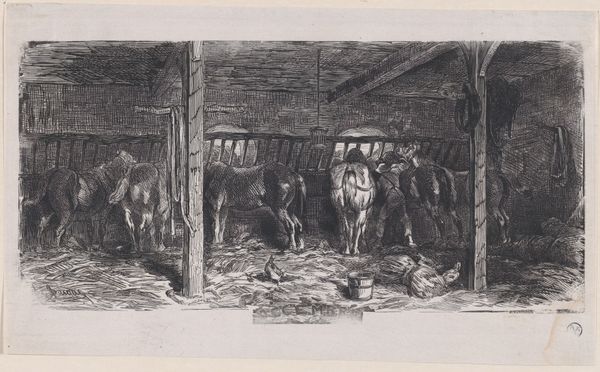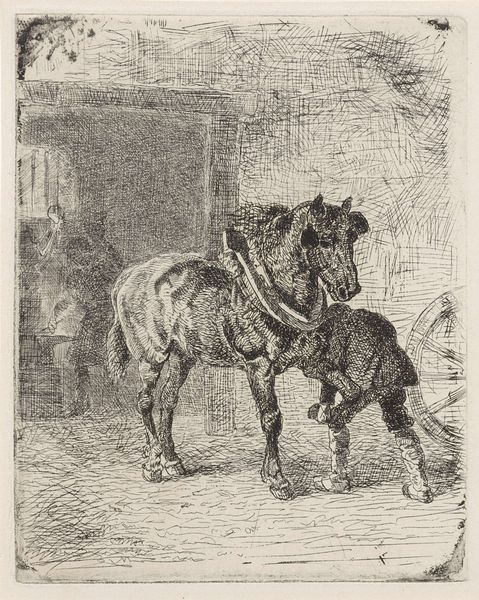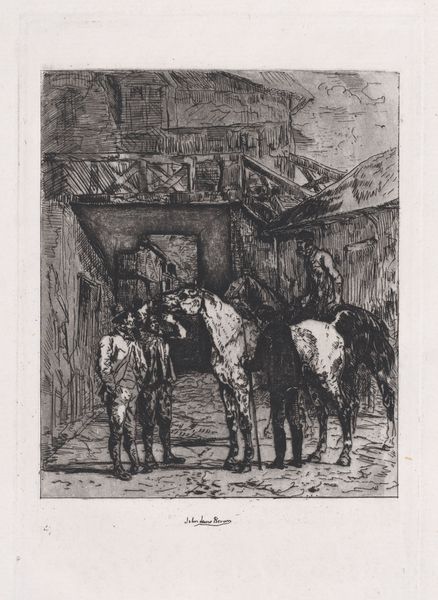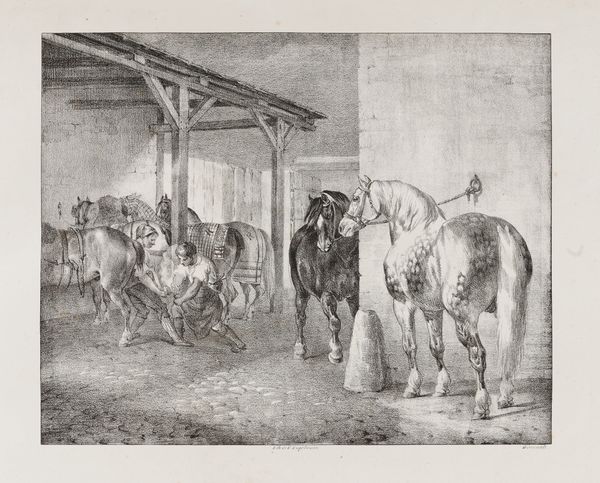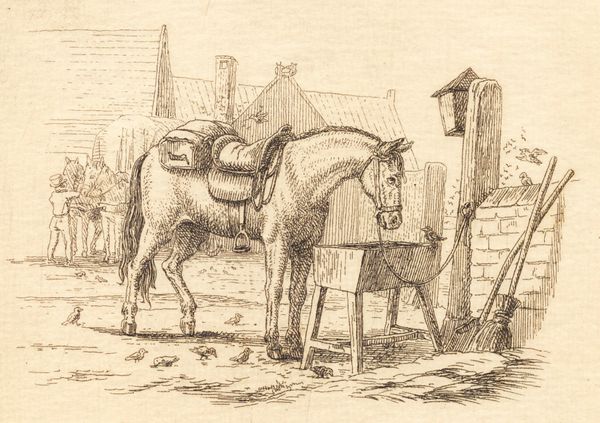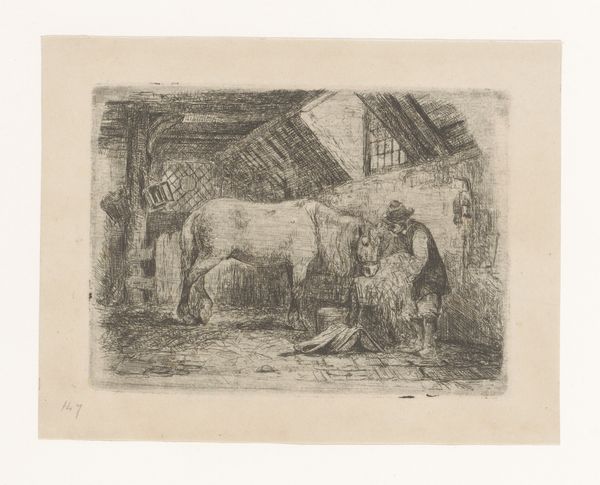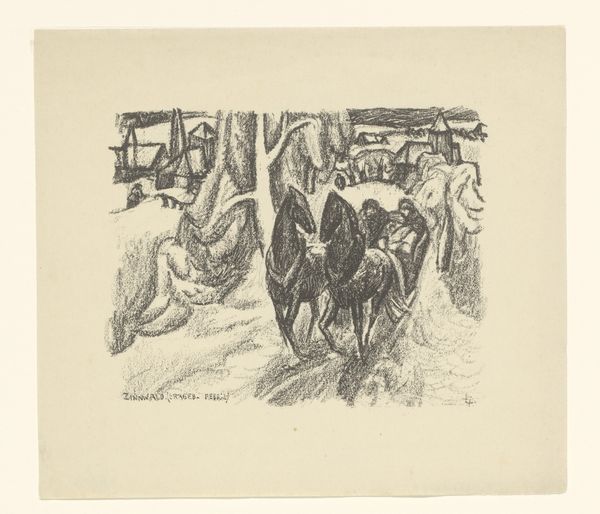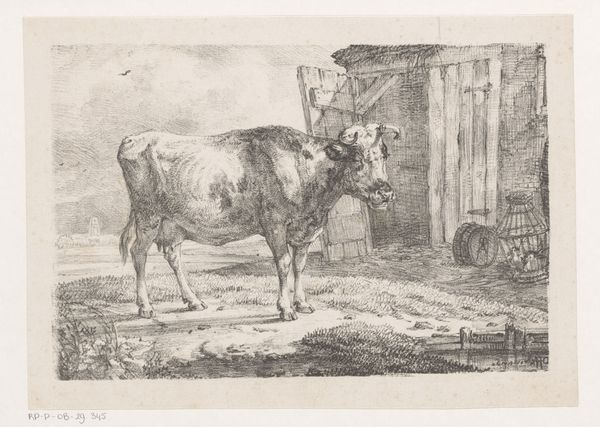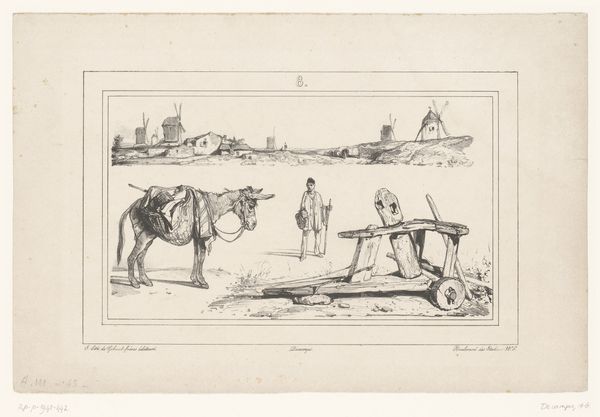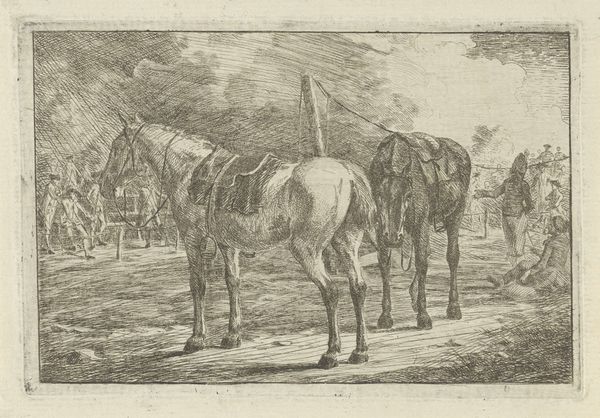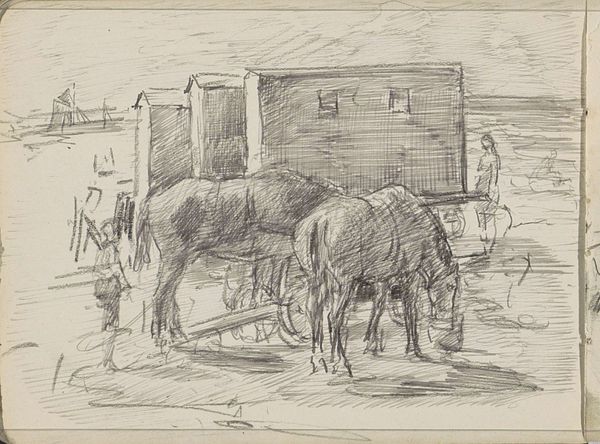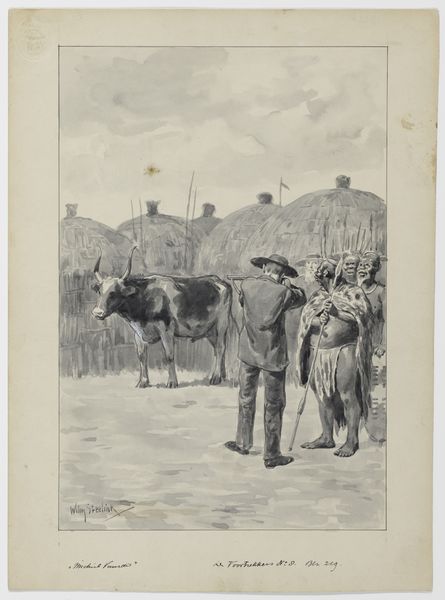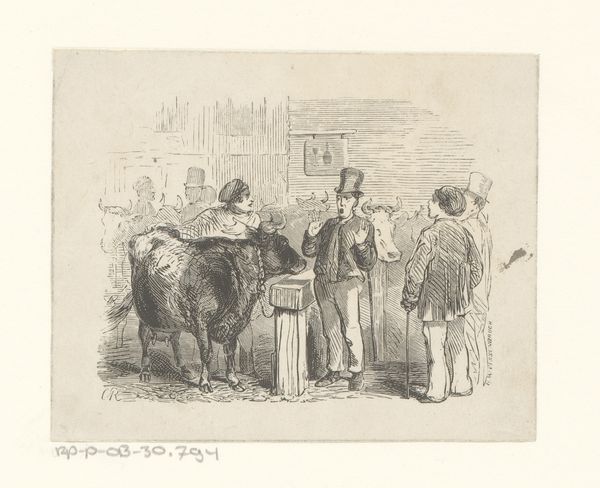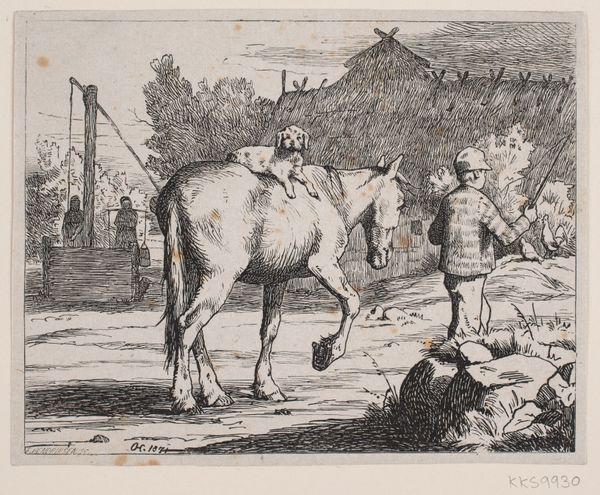
Percheron Horses in a Stable and A Manure Pit, from "Le Magasin Pittoresque" 1848 - 1864
0:00
0:00
drawing, print
#
drawing
#
animal
# print
#
landscape
#
horse
#
genre-painting
Dimensions: Sheet (Trimmed): 7 3/4 × 6 15/16 in. (19.7 × 17.7 cm) Image: 4 3/4 × 6 1/4 in. (12 × 15.8 cm) Image: 1 9/16 × 4 5/16 in. (4 × 11 cm)
Copyright: Public Domain
Curator: This drawing, titled "Percheron Horses in a Stable and A Manure Pit," comes to us from Charles Jacque. It was originally featured in "Le Magasin Pittoresque" between 1848 and 1864. What strikes you first about it? Editor: The contrast between the bulky, solid horses and the delicate linework used to depict them is what initially grabbed my attention. The detail given to the musculature, the rendering of their hindquarters specifically… it’s incredibly visceral for what is essentially a humble drawing. Curator: Indeed, the drawing serves as a window into the agricultural labor force of the time. These horses, Percherons, are a specific breed known for their strength and were crucial for farming. There’s an intersection between the dignity of labor and the unsavory reality, visualized here by the presence of the manure pit. Editor: You can practically smell the stable through the detailed renderings! And it reminds me of other depictions of animals in art – ancient cave paintings where animal representation held symbolic power related to survival, strength. Do you think there is some romanticism in showing working horses, a similar celebration of raw power and an ode to a more straightforward connection with nature? Curator: The social context of the "Magasin Pittoresque" informs our understanding. It was a popular magazine intended to educate and uplift the working class. I would posit that including these horses in this context isn't necessarily romantic, but didactic – it underscores the societal role animals, and the working class who tended them, played in France’s economy. Editor: Still, aren’t they majestic, rendered so attentively? Look at how much attention Jacque dedicated to their massive haunches. They're symbols of fertility and labor. Their rounded shape suggests both physical might and an inherent, almost maternal, fecundity. It reminds me, symbolically, of ancient fertility icons such as the Venus of Willendorf. Curator: I see your point regarding the potential visual association. I read a socio-political angle. While Jacque portrays these working animals with some grandeur, we mustn’t strip the exploitation they and their handlers faced in service of France's growing capitalist endeavors. We must stay critical while decoding it as art. Editor: I agree, art should make us look and think critically. Seeing the interplay between beauty and the grit of reality – Jacque prompts exactly that, stirring within us an understanding that is multi-layered. Curator: Absolutely, a great example of a piece reflecting complex societal layers.
Comments
No comments
Be the first to comment and join the conversation on the ultimate creative platform.
